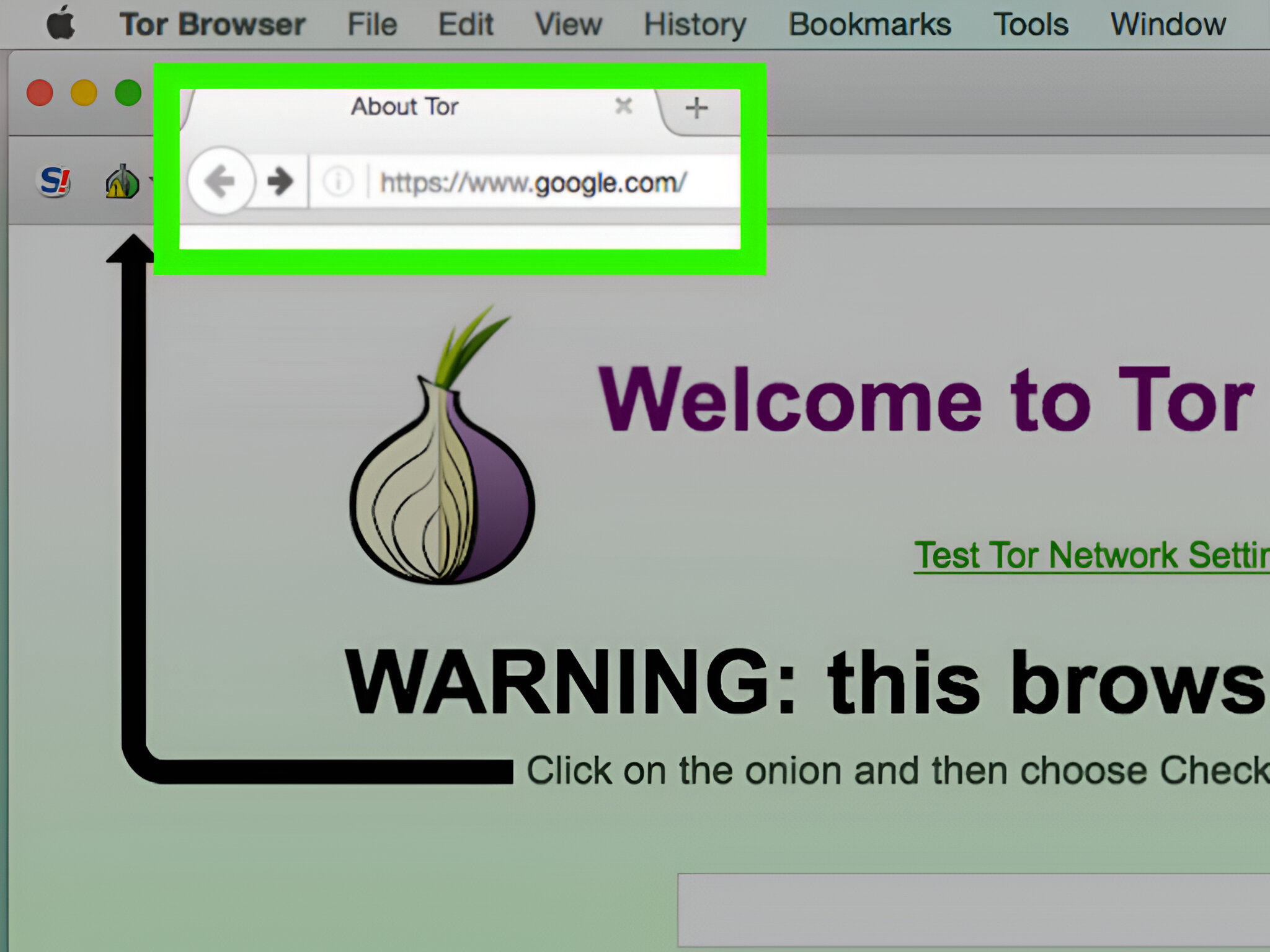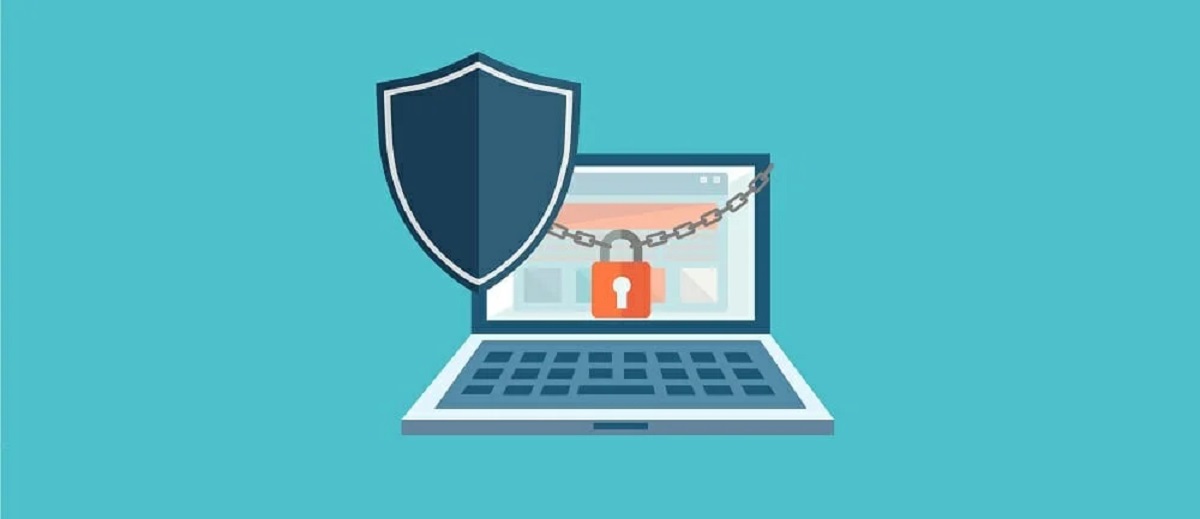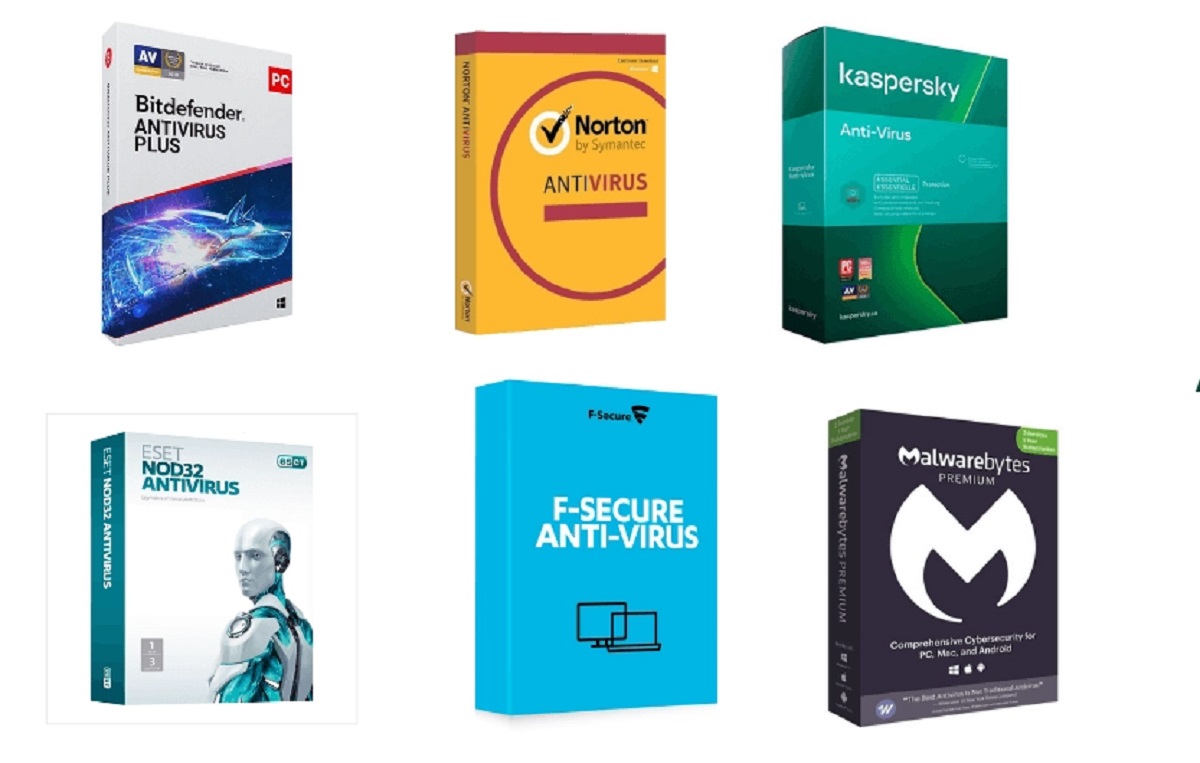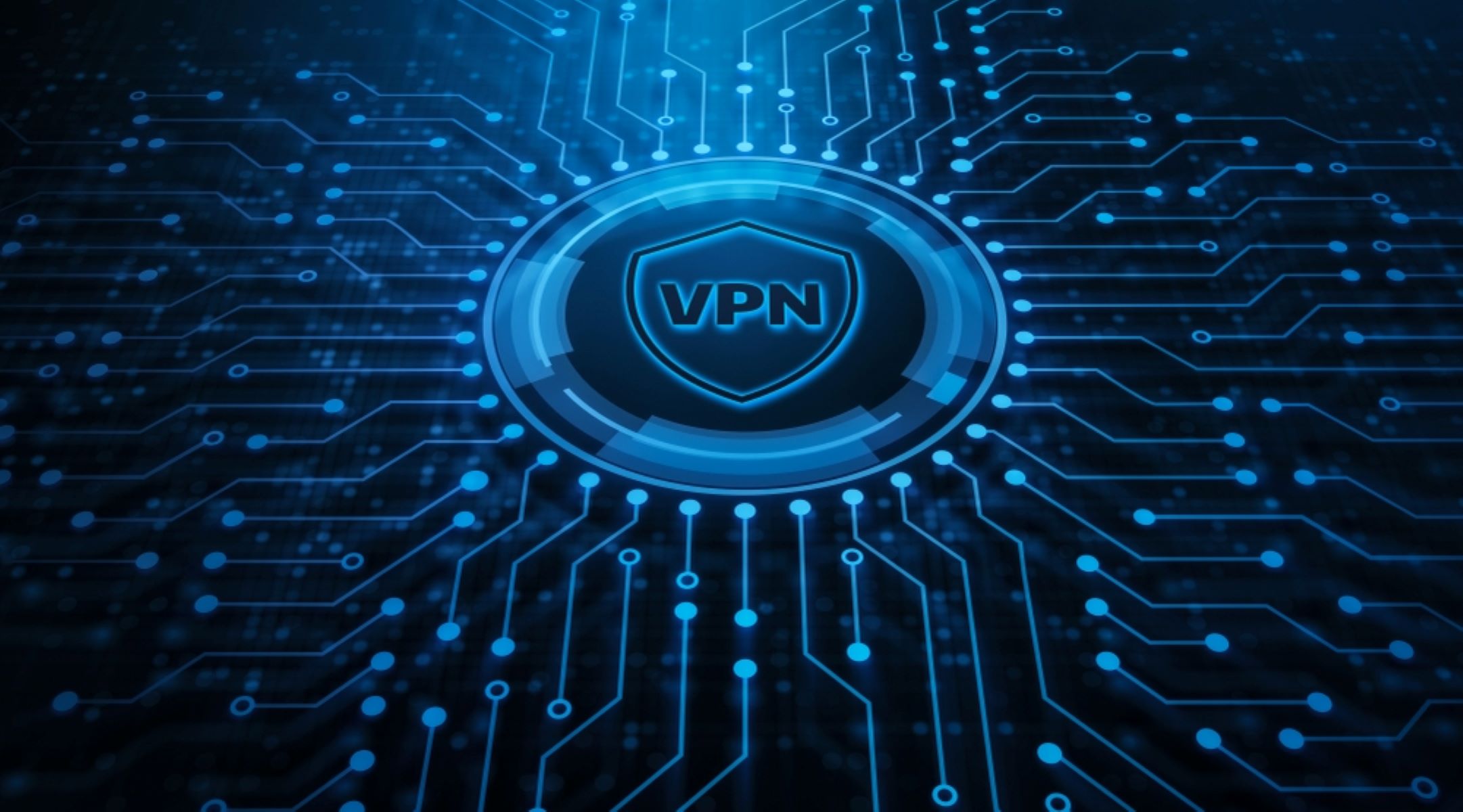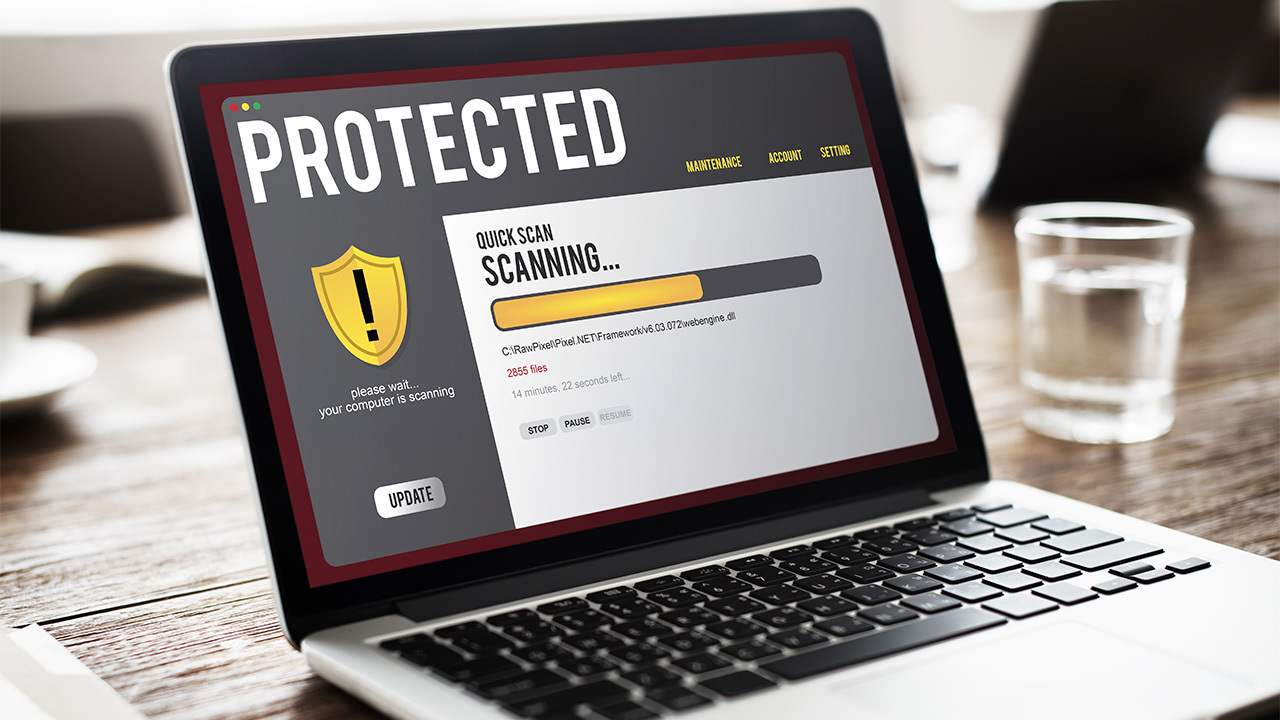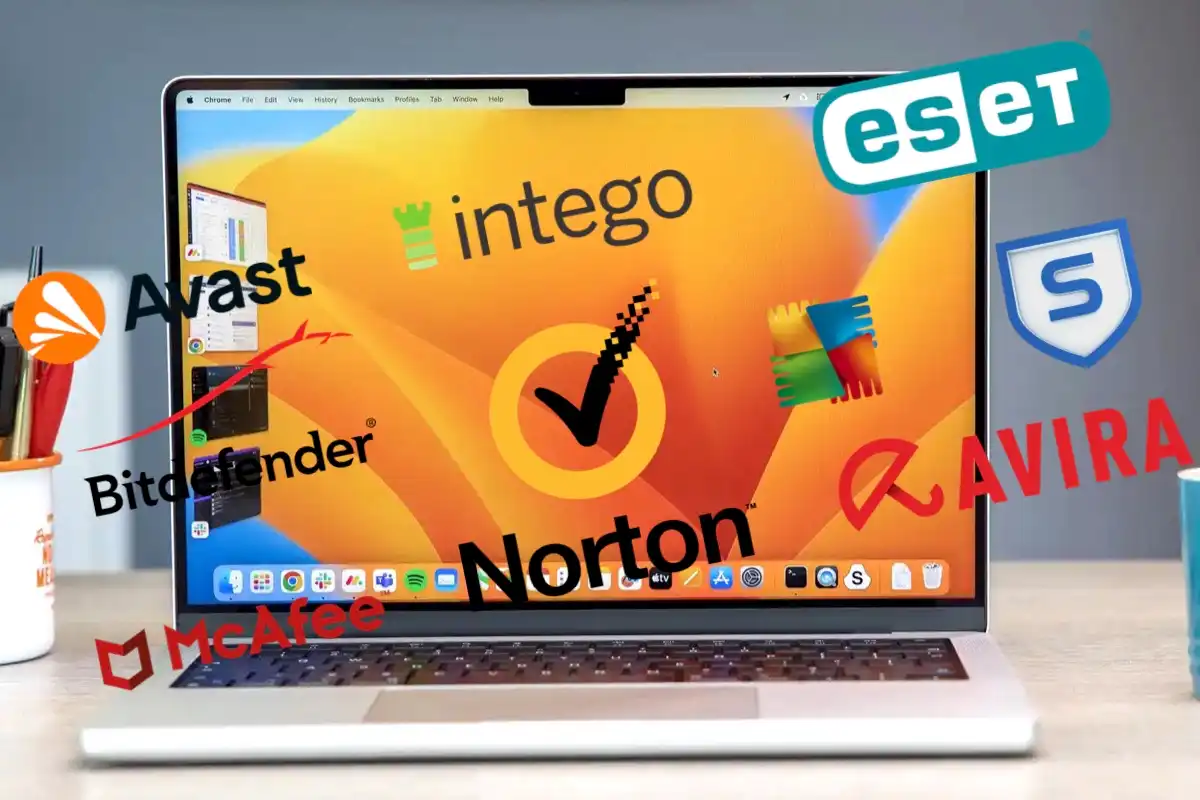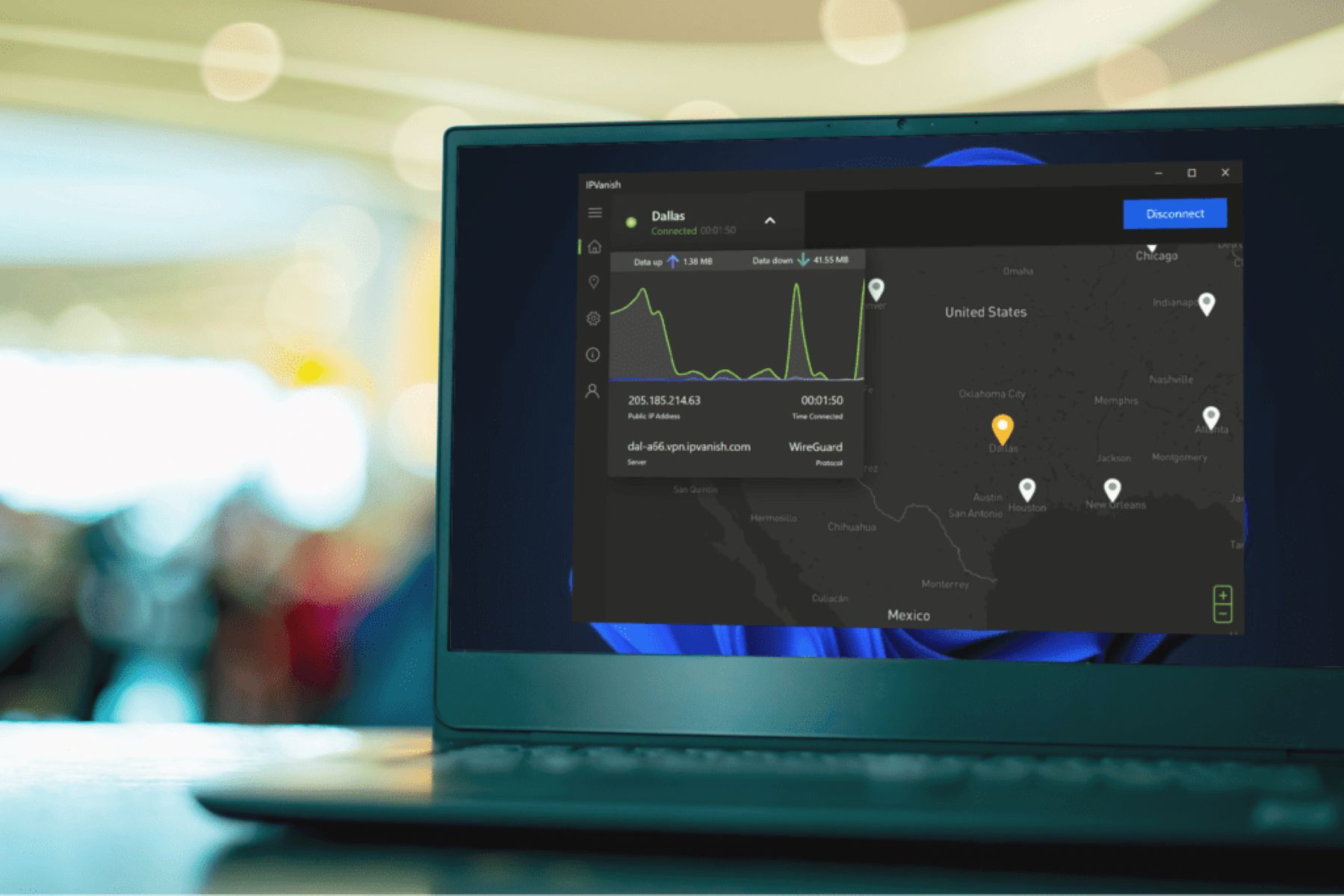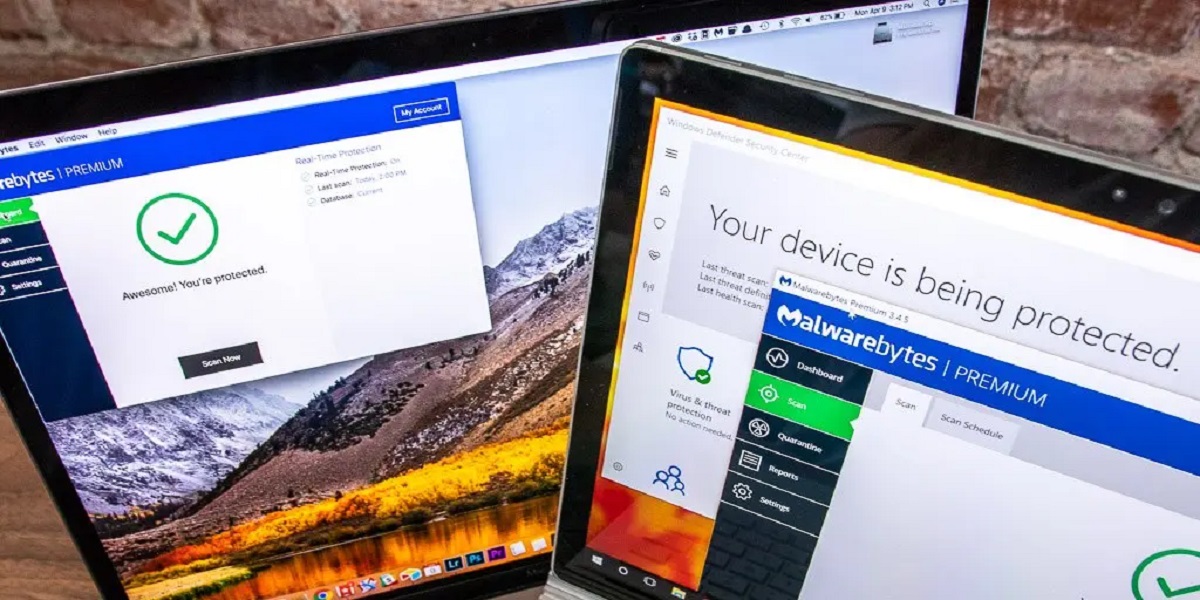Introduction
The Dark Web, often shrouded in mystery and intrigue, has captivated the curiosity of many internet users. It is a hidden corner of the internet that is not easily accessible using traditional search engines. Instead, it requires specific tools and software to navigate its depths. In recent years, the Dark Web has gained notoriety for being a breeding ground for illegal activities, such as drug trafficking, human trafficking, and the sale of stolen data.
While the Dark Web has garnered a reputation for its association with criminal activities, it is important to recognize that it also serves other purposes. It can provide a platform for whistleblowers, journalists, and activists to communicate securely, away from prying eyes and potential surveillance.
Accessing the Dark Web is not as simple as typing a URL into a web browser. It requires a certain level of technical knowledge and precautions to ensure your safety and privacy. In this article, we will explore the necessary steps to safely access the Dark Web, the tools required, and the potential risks involved.
However, before we delve deeper into the process, it is crucial to understand the legal implications of accessing the Dark Web. While the act of accessing the Dark Web itself is not illegal, it is vital to note that engaging in illegal activities within this realm is. It is essential to adhere to the laws of your jurisdiction and use the Dark Web responsibly.
Now, let’s explore the steps required to access the Dark Web and navigate its hidden recesses, all while ensuring your safety and adherence to the law.
What is the Dark Web?
The Dark Web is a part of the internet that exists beyond the reach of traditional search engines. Unlike the Surface Web, which is indexed and easily accessible, the Dark Web is intentionally hidden and requires specific software to access. It is a network of websites that are not readily visible to the average internet user.
One of the distinguishing features of the Dark Web is its use of encryption and anonymity tools to protect the identity and location of its users. This anonymity is achieved through tools like Tor (The Onion Router) and I2P (Invisible Internet Project), which route internet traffic through a series of randomized relays, making it difficult to trace the origin of the communication.
Within the Dark Web, you will find a myriad of websites and services that cater to various interests and activities. While it is true that the Dark Web has gained notoriety for hosting illegal marketplaces and facilitating criminal activities, it is not solely dedicated to such pursuits. The Dark Web also provides a space for individuals seeking privacy, security, and freedom of expression.
Whistleblowers, journalists, activists, and individuals living in repressive regimes can use the Dark Web as a platform to communicate securely and anonymously. Its encrypted nature allows for the sharing of sensitive information and the expression of ideas without fear of censorship or retribution.
However, it is important to note that not everything on the Dark Web is legal or ethical. The anonymous nature of the Dark Web also attracts individuals and groups involved in illicit activities, including the sale of drugs, weapons, hacking tools, stolen data, and other illegal services. The Dark Web provides them with a realm of secrecy and relative impunity to carry out their operations.
It is crucial to approach the Dark Web with caution and understanding. While it can offer opportunities for privacy and free expression, it also exposes users to potential dangers and legal consequences. Navigating the Dark Web requires careful consideration, technical knowledge, and adherence to the law.
Understanding the Dark Web’s Purpose
The Dark Web serves various purposes, attracting a diverse range of users with distinct intentions. While it is often associated with illegal activities, it is essential to recognize that not all users of the Dark Web engage in illicit behavior. Understanding the different purposes of the Dark Web can help dispel some of the misconceptions surrounding it.
1. Anonymity and Privacy: One of the primary purposes of the Dark Web is to provide a platform for users to maintain their anonymity and privacy. This is particularly valuable for individuals who face surveillance or censorship in their local environments. Journalists, activists, and whistleblowers often turn to the Dark Web to communicate securely, protecting their identities and preventing potential reprisals.
2. Information Sharing: The Dark Web can also function as a hub for sharing information that may be considered sensitive, controversial, or illegal in certain jurisdictions. It provides a platform for individuals who want to exchange ideas, discuss topics freely, or access content that might be blocked or restricted on the Surface Web.
3. Resistance Against Censorship: The Dark Web has gained popularity among individuals living in countries with strict censorship laws. It allows them to bypass government restrictions and access information that would otherwise be blocked. By utilizing encryption and anonymous communication, the Dark Web becomes a tool for circumventing censorship and promoting freedom of expression.
4. Marketplace for Goods and Services: Unfortunately, the Dark Web is also known for hosting a range of illicit marketplaces. These marketplaces facilitate the sale of illegal drugs, counterfeit goods, stolen data, hacking tools, and other illicit services. The hidden nature of the Dark Web provides cover for those engaged in criminal activities, making it challenging for law enforcement agencies to track and shut them down.
It is important to note that not all marketplaces on the Dark Web are illegal. Some exist as platforms for individuals to engage in legal transactions while preserving their privacy, such as whistleblowing platforms and cryptocurrency exchanges. However, users must exercise caution and use discernment when engaging in any transactions on the Dark Web.
Understanding the various purposes of the Dark Web helps shed light on its complexities and nuances. While illegal activities do occur on the Dark Web, it is crucial not to make sweeping generalizations. The Dark Web encompasses a spectrum of activities, ranging from legitimate use cases to criminal endeavors. Being aware of its multifaceted nature is essential when navigating this hidden realm.
Is It Legal to Access the Dark Web?
Accessing the Dark Web itself is not illegal in most countries. It is important to understand that the Dark Web is simply a different part of the internet and does not inherently violate any laws. However, it is worth noting that engaging in illegal activities on the Dark Web is illegal and subject to prosecution.
The legality of accessing the Dark Web largely depends on the laws and regulations of your jurisdiction. While some countries have placed restrictions on accessing the Dark Web, others have not explicitly banned it. It is vital to familiarize yourself with the laws governing internet usage in your country to ensure compliance.
It is also essential to consider the ethical implications and potential risks associated with accessing the Dark Web. While there are legitimate and legal uses for the Dark Web, such as secure communication and anonymous browsing, it is known for attracting individuals engaged in illegal activities. Law enforcement agencies closely monitor the Dark Web, and engaging in criminal behavior can result in legal ramifications.
Furthermore, the Dark Web presents risks to your personal safety and cybersecurity. The anonymity it provides can attract malicious actors, who may attempt to exploit vulnerabilities or engage in fraudulent activities. It is crucial to take precautions and safeguard your device and personal information when accessing the Dark Web.
Using a Virtual Private Network (VPN) is highly recommended when accessing the Dark Web. A VPN encrypts your internet connection, making it difficult for third parties to intercept your data. It also helps maintain your anonymity by masking your IP address, adding an extra layer of protection.
Lastly, it is essential to emphasize that responsible and ethical use of the Dark Web is crucial. Avoid engaging in illegal activities or supporting illicit marketplaces. Respect the laws of your jurisdiction and use the Dark Web for legitimate purposes, such as privacy and secure communication.
Always stay informed about the legal aspects, potential risks, and security measures before venturing into the Dark Web. Remember that your actions online, whether on the Surface Web or the Dark Web, have consequences, and it is your responsibility to navigate the digital realm responsibly and within the boundaries of the law.
Steps to Access the Dark Web
Accessing the Dark Web requires specific tools, software, and precautions to ensure your safety and privacy. While it is not a straightforward process, following these steps will help you navigate the hidden realms of the Dark Web.
1. Acquire the Necessary Equipment: To access the Dark Web, you will need a computer or mobile device with a reliable internet connection. Ideally, use a device that is separate from your primary one to minimize the risk of compromising your personal information.
2. Choose the Right Operating System: While the Dark Web can be accessed from various operating systems, using a secure and privacy-focused OS like Tails or Whonix is recommended. These operating systems are specifically designed to protect your privacy and enhance security.
3. Install Necessary Software: The most common software used to access the Dark Web is the Tor browser. Tor is an open-source web browser that allows for anonymous and secure browsing. Download and install the Tor browser from the official website.
4. Secure Your Device: Before accessing the Dark Web, ensure that your device is secure. Update your operating system and antivirus software to the latest version, and enable firewalls to strengthen your device’s security defenses.
5. Connect Using a VPN: For an additional layer of security and privacy, use a Virtual Private Network (VPN) before accessing the Dark Web. A VPN encrypts your connection and hides your IP address, making it difficult for anyone to trace your online activities.
6. Access the Tor Browser: Launch the Tor browser and enter the URL of a Dark Web directory or search engine. The Tor network works by routing your connection through multiple relays, ensuring anonymity and privacy.
7. Know Where to Look: The Dark Web is vast and comprised of numerous hidden websites. Some popular directories and search engines, like the Hidden Wiki, can help you discover interesting and relevant sites. Be cautious and avoid clicking on unverified links.
8. Understand the Risks and Stay Safe: Navigating the Dark Web comes with inherent risks. Avoid disclosing personal information or engaging in suspicious activities. Be skeptical of offers and avoid engaging in illegal transactions or participating in illicit marketplaces.
It is crucial to exercise caution and prioritize your safety when accessing the Dark Web. Stay informed about the latest security practices, regularly update your software, and be mindful of the risks associated with exploring this hidden realm.
Remember, the Dark Web can be full of illegal content and activities, and engaging in such activities can have severe legal consequences. Understand the laws of your jurisdiction and use the Dark Web responsibly and ethically.
Step 1: Acquire the Necessary Equipment
To access the Dark Web, you will need specific equipment that enables you to navigate its hidden depths securely. While the equipment requirements are relatively simple, it is essential to ensure that you have the necessary tools to protect your privacy and maintain anonymity.
The primary equipment you need to access the Dark Web includes:
1. Computer or Mobile Device: You will need a computer or mobile device with an internet connection to access the Dark Web. It is recommended to use a device that is dedicated solely to accessing the Dark Web and separate from your everyday browsing activities. This helps minimize the risk of exposing your personal information.
2. Secure Operating System: Consider using a secure and privacy-focused operating system to enhance your online security. Operating systems like Tails and Whonix are specifically designed to provide anonymity and protect your privacy. These OS options route your internet traffic through the Tor network, making it difficult for anyone to track your online activities.
3. Reliable Internet Connection: A stable and reliable internet connection is necessary for smooth and uninterrupted access to the Dark Web. Ensure that you have a reliable internet service provider and a strong signal to prevent connection drops or disruptions.
4. Encrypted Storage: Protecting your data is crucial when accessing the Dark Web. Consider using encrypted storage devices or encrypted virtual disks to secure any sensitive information you may have and prevent unauthorized access to your data.
5. Backup Solution: Backing up your data is essential, not just for accessing the Dark Web, but for general computer security. Make sure you have a reliable backup solution in place to prevent data loss in case of any unforeseen circumstances.
In addition to the equipment listed above, it is also recommended to have an extra layer of security by using an external firewall. Firewalls help protect your device by monitoring and filtering network traffic, preventing unauthorized access to your computer or mobile device.
When acquiring the necessary equipment, consider your specific needs and the level of security you desire. Remember that protecting your privacy and personal information is of utmost importance when accessing the Dark Web.
By ensuring that you have the right equipment for accessing the Dark Web, you can take the necessary precautions to protect your privacy, maintain anonymity, and explore the hidden realms of the internet securely.
Step 2: Choose the Right Operating System
When accessing the Dark Web, choosing the right operating system (OS) is crucial to enhance your security and protect your privacy. While it is possible to access the Dark Web using various operating systems, opting for a secure and privacy-focused OS can provide you with added layers of protection.
There are several operating systems tailored specifically for anonymity and security purposes. Two popular options are:
1. Tails (The Amnesic Incognito Live System): Tails is a Linux-based operating system that prioritizes anonymity and privacy. It operates from a USB stick or DVD and leaves no traces on the host computer. Tails forces all internet traffic to go through the Tor network, ensuring that your IP address and online activities remain hidden.
2. Whonix: Whonix is another privacy-focused OS that runs on the VirtualBox virtualization software. It consists of two virtual machines—one for the gateway and another for the workstation. The gateway routes all network traffic through the Tor network, while the workstation allows you to access the Dark Web securely.
Both Tails and Whonix provide a high level of privacy and security while accessing the Dark Web. These operating systems are designed to minimize the risk of exposing your identity and ensure that your online activities cannot be traced back to you.
When choosing the right operating system, consider factors such as your technical proficiency, hardware compatibility, and the specific features offered by each system. It is also important to keep the operating system up to date with the latest security patches to protect against any vulnerabilities.
Keep in mind that while using a privacy-focused operating system can significantly enhance your security, it is not a foolproof solution. It is essential to practice other security measures, such as using strong and unique passwords, regularly updating your software, and being cautious when interacting with unknown websites or individuals.
By selecting the right operating system for accessing the Dark Web, you can greatly improve your security and privacy, ensuring a safe and anonymous experience within the hidden realms of the internet.
Step 3: Install Necessary Software
Installing the necessary software is a crucial step in accessing the Dark Web securely. The primary software you need to install is the Tor browser, which enables you to browse the Dark Web anonymously and safely.
Here’s how to install the necessary software:
1. Tor Browser: The Tor browser is a modified version of Mozilla Firefox that allows you to access websites on the Dark Web. It routes your internet traffic through the Tor network, providing anonymity and preventing anyone from tracing your online activities back to you. To install the Tor browser, follow these steps:
a. Visit the official Tor Project website (https://www.torproject.org/) and download the Tor browser for your operating system.
b. Once the download is complete, open the installation file and follow the on-screen instructions to install the Tor browser on your computer.
c. During the installation process, you may be prompted to choose additional security settings. It is recommended to enable the highest level of security for optimal privacy.
d. Once the installation is complete, launch the Tor browser and start exploring the Dark Web.
2. Additional Security Software: While the Tor browser provides a significant level of security and anonymity, it is always a good idea to have additional security software installed on your computer. This includes a reputable antivirus program and a firewall to help protect against malware and unauthorized access.
3. Keep Software Updated: Regularly update the software on your computer, including the Tor browser, operating system, and any other security tools you have installed. Software updates often include important security patches that help protect against vulnerabilities and keep your system secure.
Remember to download software from trusted sources. Be cautious of fake or malicious websites that claim to offer Dark Web software but may contain malware or compromise your security.
Installing the necessary software ensures you have the tools to access the Dark Web securely and anonymously. By following the steps outlined above, you can browse the Dark Web safely and protect your privacy while exploring the hidden depths of the internet.
Step 4: Secure Your Device
Before accessing the Dark Web, it is crucial to secure your device to protect your personal information, maintain your anonymity, and prevent any potential security breaches. Implementing robust security measures will help ensure a safe and secure browsing experience in the hidden realms of the internet.
Here are some essential steps to secure your device:
1. Update Your Operating System: Regularly update your operating system to the latest version. These updates often include important security patches that address vulnerabilities and protect against potential threats.
2. Install Antivirus Software: Use a reputable antivirus program and keep it updated. Antivirus software helps detect and remove malware, viruses, and other malicious software that could compromise your device’s security.
3. Enable a Firewall: Activate a firewall on your device to protect against unauthorized access. Firewalls monitor incoming and outgoing network traffic, blocking potentially harmful connections and enhancing the overall security of your device.
4. Use Strong and Unique Passwords: Create strong and unique passwords for all your accounts, including your operating system, email, and any other software you use. Avoid using easily guessable passwords and enable multi-factor authentication whenever possible.
5. Encrypt Your Hard Drive: Consider encrypting your hard drive to protect your data in case your device falls into the wrong hands. Full disk encryption ensures that your files and sensitive information cannot be accessed without the encryption key.
6. Be Cautious of Phishing Attacks: Be vigilant against phishing attacks, as they can trick you into revealing sensitive information. Avoid clicking on suspicious links, and only download software from trusted sources.
7. Use Private Browsing Mode: Activate private browsing mode or incognito mode in your web browser before accessing the Dark Web. Private browsing helps prevent your browsing history, cookies, and temporary files from being stored on your device.
8. Regularly Backup Your Data: Create regular backups of your important data to an external hard drive, cloud storage, or other secure locations. In the event of a security breach or data loss, having backups will ensure that your information remains intact.
By following these security measures, you can significantly reduce the risk of cyber threats and protect your device and personal information while accessing the Dark Web. Remember that maintaining the security of your device is an ongoing process, and it is important to stay proactive in implementing the latest security practices.
Step 5: Connect Using a VPN
Connecting to the Dark Web via a Virtual Private Network (VPN) adds an extra layer of security and privacy to your browsing experience. A VPN encrypts your internet connection and masks your IP address, making it difficult for anyone to monitor your online activities or trace your identity. Here’s how to connect using a VPN:
1. Choose a Reliable VPN Provider: Select a reputable VPN service that aligns with your security and privacy needs. Look for providers that have a strict no-logs policy, strong encryption protocols, and a wide range of server locations.
2. Install the VPN Software: Download and install the VPN software provided by your chosen VPN service. It is essential to download the software directly from the official website to ensure its authenticity.
3. Configure the VPN Settings: Open the VPN software and configure the settings according to your preferences. Options may include selecting a server location, encryption protocol, and enabling features like a kill switch, which automatically cuts off your internet connection if the VPN connection drops.
4. Connect to a VPN Server: Choose a VPN server location that is geographically close to your actual location or in a country where accessing the Dark Web is unrestricted. Connecting to a server in a different location can help preserve your anonymity.
5. Verify Your VPN Connection: Once connected, verify that your VPN connection is active by checking your IP address. You can do this by using websites or tools that display your current IP address.
6. Launch the Tor Browser: After establishing a secure VPN connection, open the Tor browser. The Tor browser routes your internet traffic through the Tor network, further protecting your anonymity as you access the Dark Web.
7. Browse Anonymously: With the VPN and Tor browser combination, you can browse the Dark Web anonymously and enjoy an additional layer of security. Remember to avoid disclosing personal information and to be cautious of the websites you visit.
8. Disconnect from the VPN: When you’re finished browsing the Dark Web, disconnect from the VPN to restore your regular internet connection. Keep in mind that you may want to clear your browser cookies and delete any temporary files to maintain your privacy.
Using a VPN while accessing the Dark Web helps safeguard your online activities and adds an extra layer of privacy. It is important to choose a reliable VPN provider and regularly update the VPN software to ensure optimal security.
However, keep in mind that using a VPN is not a guarantee of absolute anonymity or invulnerability. It is still essential to practice safe browsing habits, exercise caution, and be mindful of the potential risks associated with accessing the Dark Web.
Step 6: Access the Tor Browser
Accessing the Dark Web requires the use of a specialized web browser called the Tor browser. The Tor browser is designed to provide anonymity and security by routing your internet traffic through the Tor network, making it difficult for anyone to track your online activities. Here’s how to access the Tor browser:
1. Download the Tor Browser: Visit the official Tor Project website (https://www.torproject.org/) and download the Tor browser for your operating system. Choose the version compatible with your device, such as Windows, macOS, Linux, or Android.
2. Install the Tor Browser: Once the download is complete, run the installation file and follow the on-screen instructions. The installation process is similar to installing any other software on your device.
3. Launch the Tor Browser: After the installation is complete, launch the Tor browser. You will be greeted with a welcome screen with information about Tor and its features.
4. Connect to the Tor Network: To access the Dark Web, the Tor browser needs to connect to the Tor network. Click the “Connect” button to establish a connection. Depending on your internet speed, it may take a moment to connect.
5. Configure Your Security Settings: Once connected, you will be prompted to configure your security settings. The default settings prioritize security, but you can adjust them based on your preferences. It is recommended to use the highest security level for optimal privacy.
6. Start Browsing the Dark Web: With the Tor browser connected to the Tor network, you can now start exploring the Dark Web. Use search engines or directories specific to the Dark Web to find websites of interest. Take caution and only access trusted websites to mitigate potential risks.
7. Follow Safe Browsing Practices: While using the Tor browser ensures a certain level of anonymity and security, it is essential to follow safe browsing practices. Avoid disclosing personal information, downloading files from untrusted sources, or engaging in any illegal activities.
8. Regularly Update the Tor Browser: Stay proactive in keeping your Tor browser up to date. New versions often include security patches and feature enhancements that provide improved protection and user experience.
Remember, using the Tor browser to access the Dark Web does not make you completely anonymous. It is important to understand the risks associated with accessing the Dark Web and take necessary precautions to protect your privacy and digital security.
By following these steps, you can access the Dark Web using the Tor browser and explore its hidden depths while maintaining a certain degree of anonymity and security.
Step 7: Know Where to Look
Knowing where to look is a key aspect of accessing and navigating the Dark Web effectively. Due to its hidden nature, finding specific websites, forums, or resources can be challenging. However, there are directories and search engines specifically designed for discovering Dark Web content. Here’s how to know where to look:
1. Dark Web Directories: Dark Web directories act as a starting point to find various websites and services. One popular example is the Hidden Wiki, which functions as a directory of Dark Web links. It provides categories and subcategories to help you explore different areas of interest. Keep in mind that while directories can be useful, they may also contain links to illegal or dangerous content, so exercise caution and use your discretion.
2. Dark Web Search Engines: Unlike traditional search engines, Dark Web search engines are specialized in indexing Dark Web content. They allow you to search for specific keywords or topics within the Dark Web. DuckDuckGo’s “Onion Search Engine” is one such example. Use these search engines to find websites related to your interests while staying within the confines of the Dark Web.
3. Online Communities and Forums: Online communities and forums on the Dark Web can be valuable sources of information and interaction. These platforms allow users to discuss various topics and share resources. However, be aware that not all communities and forums on the Dark Web are trustworthy or safe, so exercise caution when interacting with others or sharing information.
4. Recommendations and Word of Mouth: Networking within the Dark Web can be a valuable way to discover reputable websites and resources. Engaging with trustworthy individuals or communities within the Dark Web can lead you to recommendations for websites or forums that align with your interests.
5. Verify Website Authenticity: When accessing the Dark Web, it is crucial to verify the authenticity and reliability of websites before interacting with them. Look for user feedback, reviews, or reputation systems within Dark Web communities to gain insights into a website’s trustworthiness. Additionally, be cautious of phishing attempts or malicious sites that imitate legitimate platforms. Exercise vigilance and employ good judgment.
Remember, the Dark Web is known for hosting illegal activities, and stumbling upon such content is a possibility. Stay within legal boundaries, prioritize your safety, and exercise responsible browsing practices while searching for and interacting with Dark Web content.
By knowing where to look and utilizing reliable directories, search engines, forums, and recommendations, you can navigate the Dark Web more effectively and find the information or resources you seek.
Step 8: Understand the Risks and Stay Safe
While accessing the Dark Web can offer unique experiences and opportunities, it is important to be aware of the inherent risks and take necessary precautions to stay safe. Understanding the potential dangers associated with the Dark Web will help you navigate this hidden realm with caution. Here are some key considerations:
1. Illicit Content and Illegal Activities: The Dark Web is notorious for hosting illegal marketplaces, criminal activities, and explicit content. Engaging in illegal activities on the Dark Web can lead to severe legal consequences. It is essential to abide by the laws of your jurisdiction and avoid participating in any illegal or unethical activities.
2. Malicious Actors: The anonymous nature of the Dark Web provides a breeding ground for malicious actors. Cybercriminals may attempt to exploit vulnerabilities, launch phishing attacks, or distribute malware and viruses. Be cautious when interacting with unknown websites, downloading files, or sharing personal information.
3. Law Enforcement and Surveillance: While the Dark Web provides a certain degree of anonymity, it does not make you completely invulnerable. Law enforcement agencies actively monitor the Dark Web, and unauthorized activities can attract unwanted attention. Remember that illegal activities can have serious legal consequences.
4. Financial Risks: The Dark Web is rife with scams and fraud. Be vigilant and exercise caution when engaging in financial transactions. Avoid sharing sensitive financial information unless you have verified the legitimacy of the website or service.
5. Privacy and Anonymity Risks: While tools like Tor and VPNs can provide a certain level of privacy and anonymity, they are not foolproof. Techniques and technologies used by determined adversaries can compromise your anonymity. Be mindful of the information you share and implement additional security measures to protect your privacy.
6. Psychological and Emotional Well-being: Certain content and experiences on the Dark Web can be disturbing, graphic, or triggering. It is crucial to prioritize your mental well-being and avoid accessing content that may have a negative impact on your psychological state.
7. Device Security: Ensure that your device is adequately secured before accessing the Dark Web. Keep your operating system, antivirus, and other security software up to date. Employ strong passwords, enable two-factor authentication, and regularly backup your data. Practice safe computing habits to protect your device from potential threats.
By understanding the risks associated with the Dark Web and implementing appropriate security measures, you can navigate this hidden realm more safely. Always exercise caution, be mindful of your actions, and prioritize your digital security and personal well-being as you explore the Dark Web.
Conclusion
Accessing the Dark Web is an intriguing adventure that requires careful consideration and adherence to security measures. While the Dark Web offers opportunities for privacy, anonymity, and free expression, it is important to be aware of the risks and legal implications involved. By following the steps outlined in this guide, you can navigate the Dark Web safely and responsibly.
Understanding the purposes of the Dark Web, such as anonymity, information sharing, resistance against censorship, and marketplaces, helps dispel some of the misconceptions surrounding it. The Dark Web is not solely a haven for illegal activities, and it serves various legitimate purposes as well.
Acquiring the necessary equipment, choosing the right operating system, installing the required software, securing your device, connecting via a VPN, accessing the Tor browser, knowing where to look, and understanding the risks are all critical steps in accessing the Dark Web securely.
Remember to prioritize your safety and privacy at all times. Be cautious of potential dangers, such as illicit content, malicious actors, law enforcement, financial risks, and privacy vulnerabilities. Practice responsible browsing habits, verify website authenticity, and prioritize your mental well-being while exploring the Dark Web.
Lastly, it is important to emphasize that while accessing the Dark Web is not inherently illegal, engaging in illegal activities within its realms is. Abide by the laws of your jurisdiction and use the Dark Web responsibly and ethically.
By following the steps outlined in this guide, along with exercising caution and good judgment, you can navigate the Dark Web with a greater degree of security and privacy. Stay informed about evolving security practices and continually adapt to ensure your safety while exploring the hidden depths of the internet.







